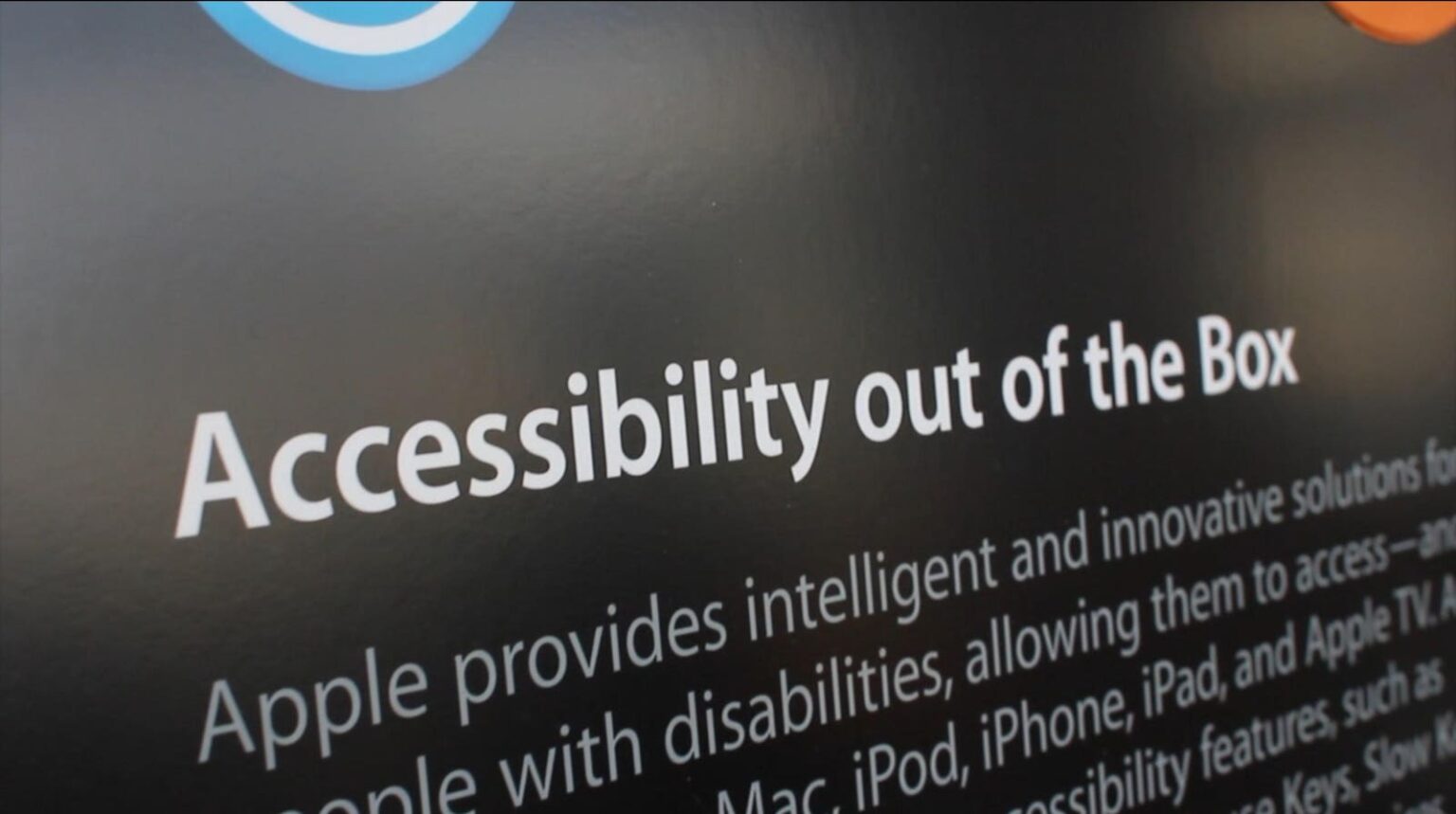A 2011 Apple Accessibility event in NYC.
Bill SchiffmillerAccessibility at Apple began 40 years ago — who knew? In 1985, while I was wearing bulky in-the-ear hearing aids, Apple was quietly laying the foundation for something much bigger. That year, they introduced MacInTalk, a basic text-to-speech engine, and opened their first Office of Disability. These were not headline-grabbing moves, but they signaled a company starting to think differently about who technology was for.
I have spent a lifetime navigating the world with hearing loss — but it was an episode of 20,000 Hertz, the podcast by sound designer Dallas Taylor, that pushed me to finally write this. In that episode, Dallas interviews Sarah Herrlinger, Apple’s Director of Global Accessibility Policy and Initiatives, along with other members of the Apple accessibility team. They shared how deeply embedded accessibility is in Apple’s design process — not as an afterthought, but as a standard. Listening to that conversation made me reflect on my own journey, both personal and professional, and how much Apple’s approach reshaped what I believe accessibility can and should be.
“It is right out of the box”
As someone who has spent decades adapting to both technological change and social expectations, I do not say this lightly: I am grateful to Apple. Their stance on accessibility did not just align with my values — it strengthened them. It gave me confidence, clarity, and the ability to lead. As a hard-of-hearing man trying to make it in the world, my work at Apple showed me — and allowed me to show others — that accessibility is not extra. It is built in. It is right out of the box.
That phrase means more than convenience. It is a mindset. At Apple, I saw a culture that believed in making the impossible possible. Accessibility was not bolted on — it was part of how products were conceived from the ground up. And that belief gave me a platform to educate, advocate, and connect with people who had never considered accessibility before.
Throughout my time there, I met thousands of customers and team members who had not thought about accessibility, until we talked. Not because they did not care, but because it had not touched their world yet. But the moment they saw a demo, tried a feature, or heard a story, the connection was instant.
One of the most powerful experiences I had was leading our first-ever Accessibility Event in New York City. It was a packed room — parents, professionals, students, users with disabilities, and their families. That event sent a message: Apple is here. We see you. And we are building with you.
The impact was immediate. People saw possibilities, parents realizing their kids had options, adults discovering tools that supported their independence, coworkers rethinking how they collaborate. The event did not just introduce features. It offered dignity, recognition, and practical solutions for everyday life.
From a product standpoint, Apple led by example. Tools like VoiceOver, introduced in 2005, gave blind users full control of the iPhone’s touchscreen — a concept some said could not be done. Features like Live Listen, which streams live audio directly from an iPhone to compatible hearing aids, changed the way I move through the world. Accessibility was not seen as a niche — it was simply part of great product design with impact.
Dallas Taylor’s podcast underscored what I have always believed: that accessibility often leads to mainstream innovation. Captions. Voice control. Noise filtering. What begins as accommodation evolves into features everyone benefits from. Accessibility is not a silo — it is a driver of innovation. And when companies embrace it, they unlock new levels of customer loyalty, usability, and market reach.
Learn from the Apple model
That is why the business world needs to catch up. the Apple model offers a clear roadmap:
- Start with specific needs and you will uncover better solutions for all users
- Do not treat accessibility as compliance — it is strategy. Real commitment builds real trust
- Include people with disabilities in the process. Hire them. Listen to them. Build with them. Inclusion changes outcomes.
- As business leader, ask yourself: “Are we designing for everyone?” “Are we investing in accessibility as part of innovation?” “Are we creating cultures where people with disabilities are heard, represented, and empowered?”
I started my journey with hearing aids that made me feel awkward. I have lived through decades of tech evolution — and even more important, decades of shifting understanding. Working at Apple showed me what is possible when accessibility is seen not as a feature, but as a fundamental.
When we say accessibility is right out of the box, we mean no one should have to ask to be included. Everyone deserves the dignity of access — and the freedom to connect, create, and thrive.
That is more than good design. That is leadership.
That is forty years in the making. Here is to another forty years who knows what accessibility will look like then.
Happy anniversary to Apple and their accessibility work.
Read the full article here


